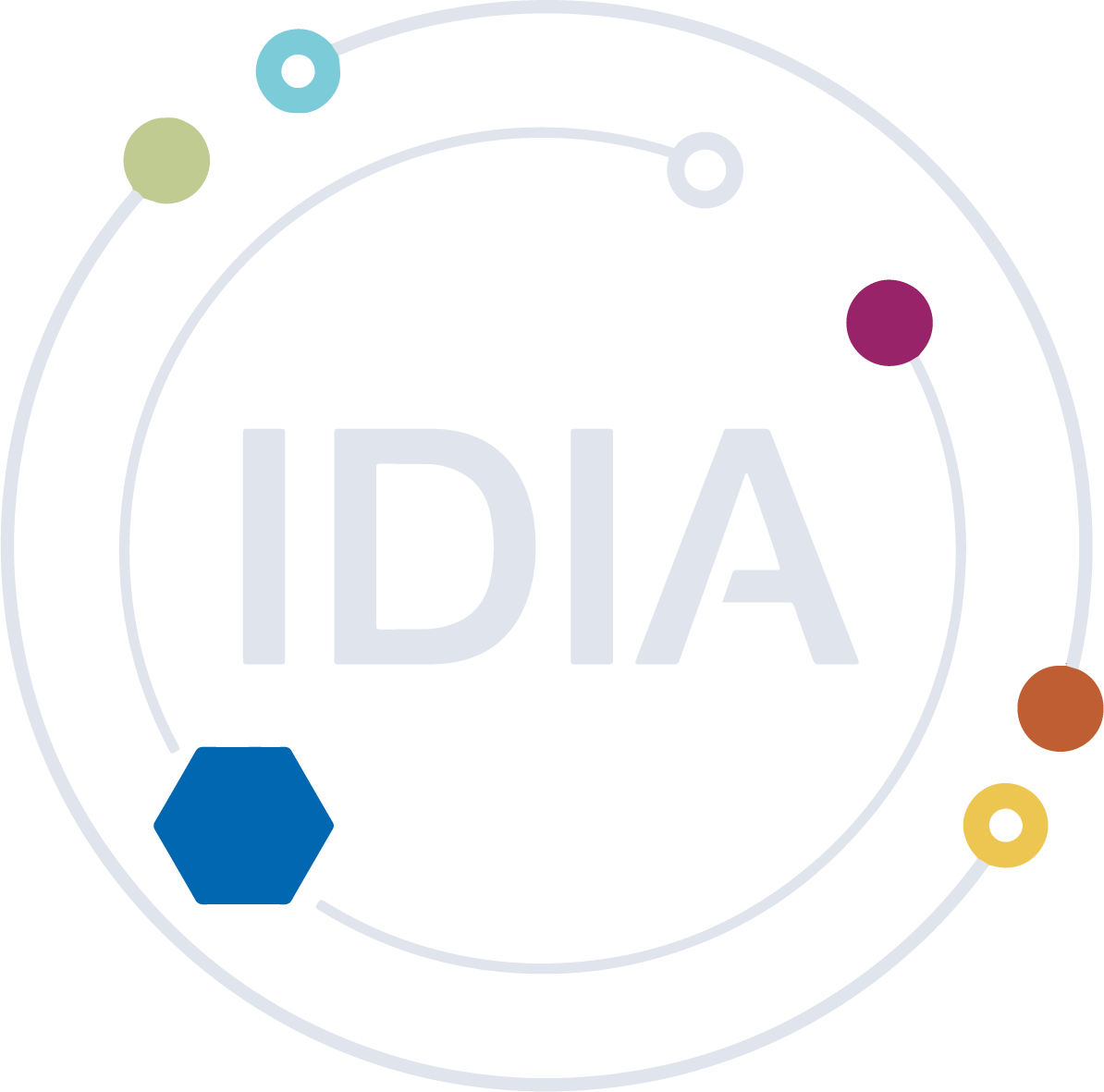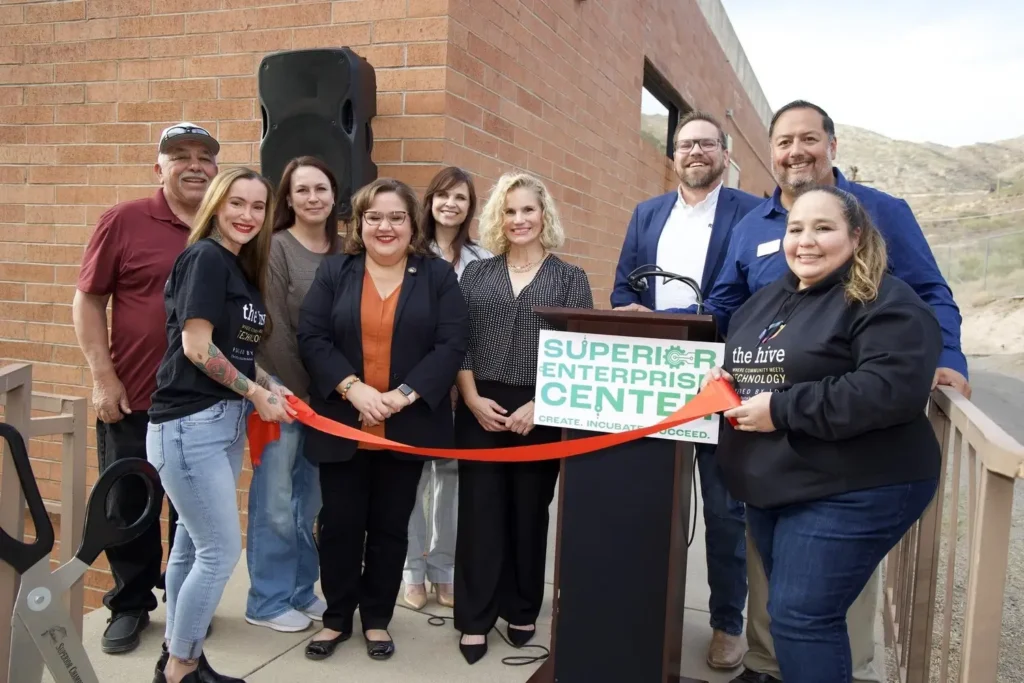
Every community deserves digital access, no matter its population size or zip code.
In two Arizona communities that rarely share the same headlines — the vast, populous city of Mesa and the small mountainside town of Superior — the Institute for Digital Inclusion Acceleration opened two new Hives this March.
The spaces expand access to technology, training, and resources for families and learners of all ages, from exploring tools like VR and 3D printing to learning internet basics with support from on-site Digital Navigators.
Thanks to support from Apple, the Hive has state-of-the-art technology, including iPads, iMacs, and Macbooks, along with Sphero robotics kits and other hands-on tools designed to spark curiosity and skill-building across age groups. Apple is also helping to equip the Hives — and the Digital Navigators — with creativity tools and resources to support storytelling, music, photography, and more.
It’s all part of an ever-growing effort to meet communities where they are and help them fully participate in today’s digital world.
Listening before launching
Mesa and Superior may be just an hour apart, but they may as well exist in two separate worlds. Each community has unique priorities, populations, and barriers to access, requiring thoughtful, tailored approaches.
To meet those needs, IDIA developed each Hive not just for, but with locals, taking their input and treating them as active collaborators.
“We serve different communities, with different challenges and opportunities,” said Stephanie LaBorde Dreux, Head of Community Activation at IDIA. “Understanding each community and each Hive that we serve, and being a part of anything we can be supportive of, is central to our approach.”
Long before opening day, IDIA staff spent weeks on the ground listening, observing, and gathering feedback to tailor programming to local interests. They even used interactive sticker boards where residents could mark topics they were most interested in learning
“We asked, ‘What would you like to learn about at the Hive?’” she said. “And people could put a little sticker on the things they’re most interested in.”
From that input, the team shaped each Hive’s offerings, whether workforce training, 3D design, telehealth access, or all of the above. That community-guided approach helped define how each new Hive would take root, starting with Mesa.
A digital anchor in Mesa
In Mesa, a city with over half a million residents, the Hive sits within the new Center for Family and Child Wellness operated by Child Crisis Arizona. The location is designed to be a resource center for families facing instability — a mission that aligns naturally with IDIA’s work.
“CCA is forming a community hub of resources there for families in crisis,” said Dreux. “Introducing them to the skills and resources that they may have otherwise not had the opportunity to learn about is a really important way to elevate the community.”
Tthe Mesa Hive will serve as a 21st-century community gathering place, where people of all ages can explore, create, and connect using cutting-edge tools. From app development and coding to robotics, video production, AI, and 3-D printing, the Hive provides free access to emerging technology and skill-building workshops, with digital navigators to support learners at every stage.
“Our partnership with the Institute for Digital Inclusion Accelerator (IDIA) marks a powerful step forward in bridging the digital divide for Arizona’s most vulnerable children and families,” says EJ Hughes, Chief Operating Officer of Child Crisis Arizona. “By combining our wraparound support services with IDIA’s innovation in digital access, we’re creating new pathways for equity, education, and long-term success. This is a win-win for Mesa, our community, and the clients we serve.”
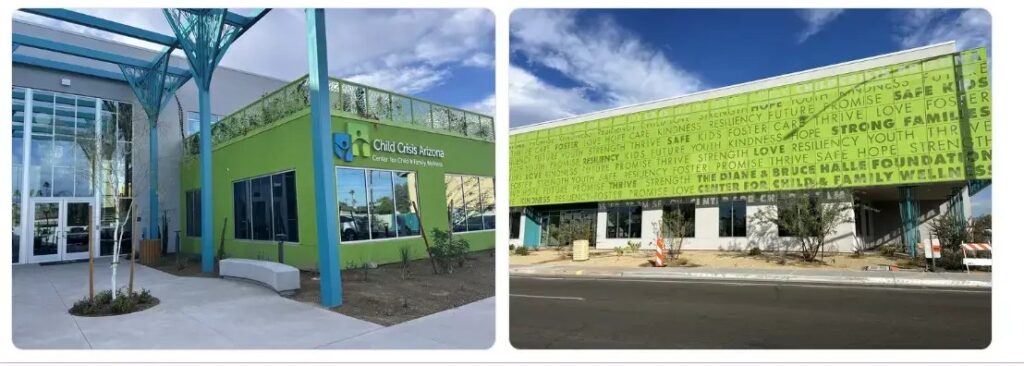
Superior: IDIA’s first rural Hive
Just over an hour away, the Superior Hive looks entirely different — and intentionally so.
“Superior marks our first rural Hive,” Dreux explained. “It isn’t terribly far from Phoenix, but far enough to where it’s not a ‘hop in your car and run over to a Phoenix Hive’ situation.”
Housed in a renovated annex of the town’s 1925 high school, now called the Superior Enterprise Center, the Hive is part of a broader revitalization effort led by local nonprofit Rebuild Superior.
“The Hive in Superior has quickly become a vibrant hub where generations connect, create, and explore,” says Arlynn Godinez, Director of the Superior Enterprise Center. “For the first time, our rural community has a space that opens the door to cutting-edge technology for everyone — young and old alike.”
Dreux agrees — and says the location holds real emotional weight for residents.
“It’s been really cool to meet people who went to high school there. They’ll come back and say, ‘Oh, I took Home Ec in this room fifty years ago,’” said Dreux. “But then to see the space utilized in a way that’s modernizing it and making it very purposeful is pretty amazing.”
And while the community is small, the need for digital access and skills is just as real. The Hive is already reaching a wide age range, from children discovering coding for the first time to seniors using virtual reality to explore the world.
“We like to say 4 to 94,” said Dreux. “They’re just so happy we’re there and so appreciative that they have access to these resources now.”
IDIA is also working closely with the Superior Chamber of Commerce to better understand small business needs and help fill skills gaps through future programming.
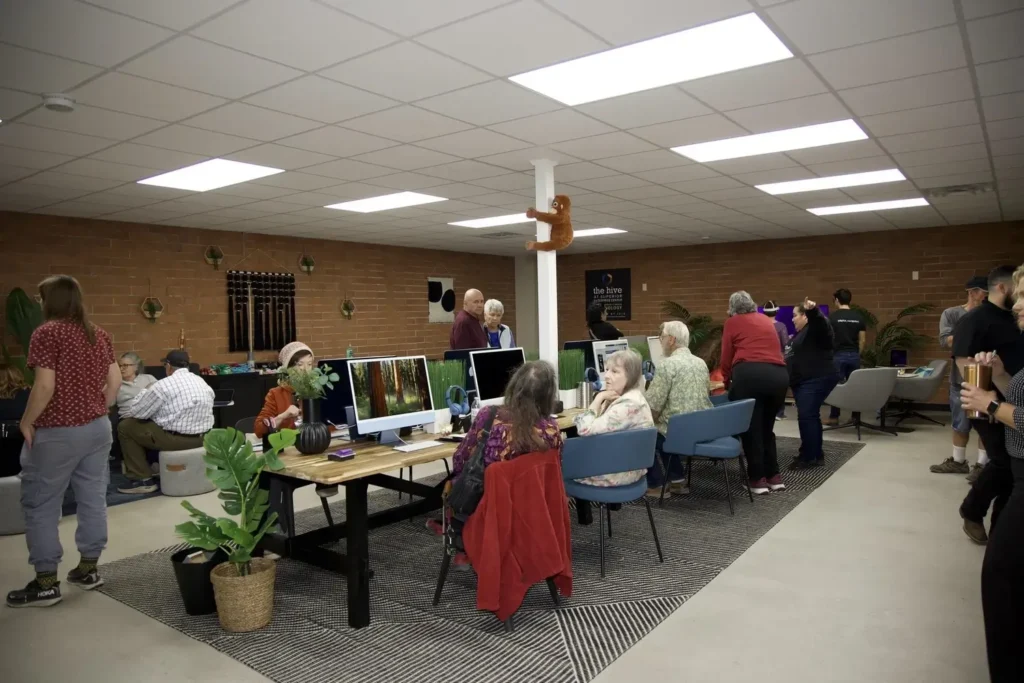
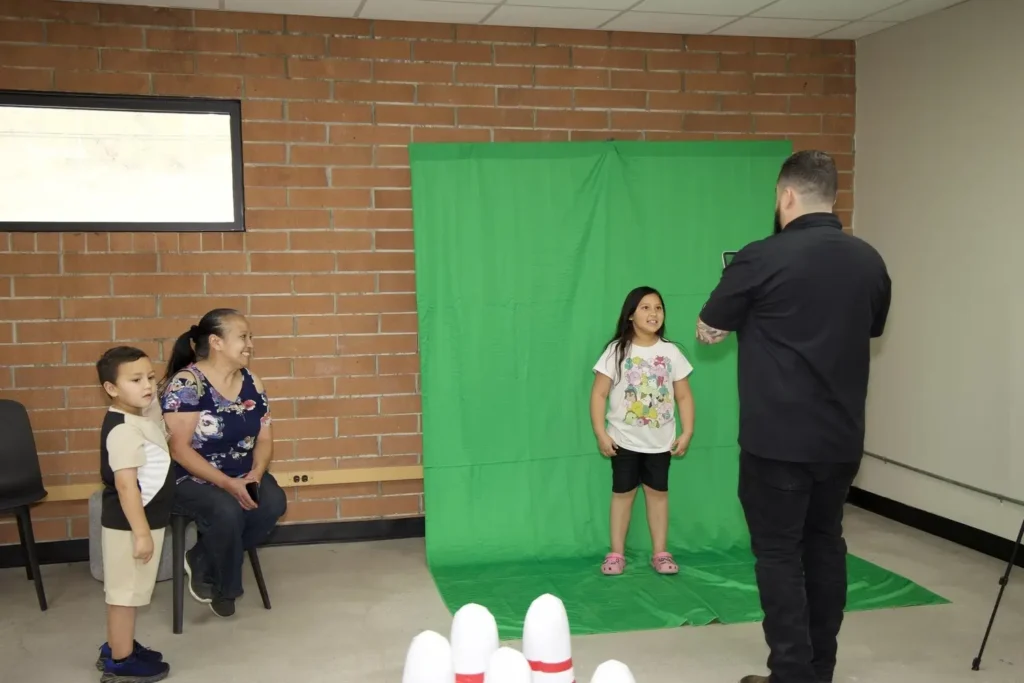
Turning need into confidence
While each Hive is tailored to its community, the outcomes often share a common thread: sparking curiosity and building confidence to use the digital tools that many people take for granted.
At one of IDIA’s Phoenix Hives, for example, a man recently released from prison rode his bike to the site to get help.
“All he wanted to do was apply for a job and they weren’t taking offline applications,” said Dreux. “He didn’t know how to do that, and he didn’t have an email address. So we helped him through each step.”
That kind of personalized support is what makes Hives so powerful. For people who never had the chance to learn digital skills, Hives offer a way to catch up — and keep up — with the tools shaping today’s world. They provide space to grow, explore, and build confidence at every level, with support from people who care.
Tailored support for towns of all sizes
Mesa and Superior mark IDIA’s sixth and seventh permanent Hives in Arizona. Next up is Sierra Vista, and then a second mobile Hive to reach even more rural and tribal communities across the state.
Support from collaborators like Apple, whose technology and creative tools are already helping to power learning inside the Hives, is critical to making that kind of reach possible.
“At Apple, we have always believed in the power of education to create opportunity — and that access to technology can help everyone unlock their highest potential,” said Stacy Erb, Apple’s Director of Community Education Initiatives. “We’re proud to build on our longstanding investments in Arizona and expand access to educational and workforce programming through IDIA’s new community spaces that will serve kids, families, and learners of all ages.”
As IDIA grows, so does the breadth of what each Hive can offer. From machine learning and AI to upcoming VR future tech pathway programs in fields like welding and aerospace, the organization continues to respond to what communities say they need most.
“Thanks to dedicated collaborators and our partnership with the county, local leaders, and Apple, IDIA is building on local momentum — creating spaces where technology sparks wonder, opens doors, and allows families to explore what’s possible in today’s digital world,” said Dr. Erin Carr-Jordan, President and CEO of IDIA. “The Hive is more than access; it’s a launchpad for discovery, creativity, and opportunity.”
“I think that’s incredible—to be able to guide people on a path so they can thrive,” said Dreux. “Not just connecting two dots, but really sending them on a trajectory to be successful.”
